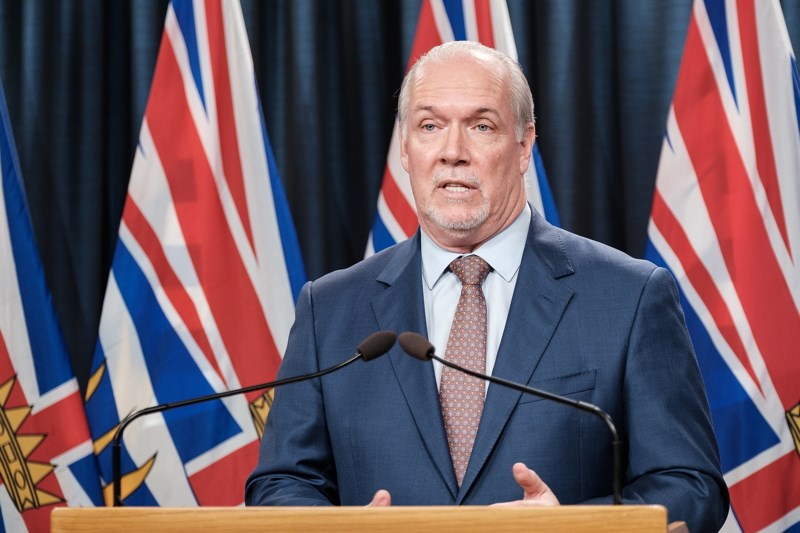 B.C. has made a major new commitment to one COVID-19 response tactic that suggests officials are more certain now that a surge in cases is coming this fall, if not sooner.
B.C. has made a major new commitment to one COVID-19 response tactic that suggests officials are more certain now that a surge in cases is coming this fall, if not sooner.
Premier John Horgan announced Wednesday that 500 more health-care workers are being hired to do contact-tracing after patients test positive for the virus.
Dr. Bonnie Henry and others have warned for months that pandemics often come in at least two surges. The scale of hiring for the contact- tracing effort and the timing suggest it is more than just a precautionary move.
It would hike the number of staff now available to do that work by 70 per cent. The move was announced just two hours before the latest daily count showed 85 new cases, the highest tally since March 23. There are now 531 active cases in B.C., up from 160 on July 1.
Last month, Health Minister Adrian Dix outlined the resources in that field. He said there were 697 staff in the health authorities around B.C. who were considered available to do such work if needed and 264 were engaged in doing so as of mid-July. He advised at the time that the $30 million in extra costs could go higher if more are needed.
Now the Provincial Health Authority is hiring 500 more temporary staff.
Horgan said they are expected to be retired health-care professionals who can be deployed around the province in teams, starting in September.
Henry, B.C.’s provincial health officer, said contact tracing is “exceedingly important” in the COVID-19 pandemic. There’s no way yet to cure victims, and the only way to control the spread is to limit exposure and track people who have been exposed to get them isolated. Self-isolation is mandatory under a health order and about 1,700 people are currently undergoing it. The B.C. Centre for Disease Control states 3,300 people have done so since the coronavirus arrived.
The process has been underway since the first case in January. So far, on average, it identifies an estimated 98 per cent of individual carriers’ contacts. Henry said they track all contacts confidentially and monitor people continuously over the two-week incubation period to check their symptoms and also their adherence to the self-isolation requirement.
Henry said the mass hiring will ensure B.C. is prepared “if there is a surge of cases in the coming months.”
“We need to keep going for the next few months, maybe even years until there is an effective vaccine.”
The workload increased significantly in recent months. B.C.’s daily cases ebbed through May and June then started increasing in July and has stayed higher through August. The restart of the economy involved relaxing some restrictions that allowed social circles to broaden. So contact tracers are chasing more cases, and the cases have more contacts than previously.
The higher summer caseload might also suggest a surge in the fall. In early spring, officials, including Henry, discussed expectations that the virus might subside during the hot summer months. But it rampaged through some hot southern American states over that time and also increased in B.C., although hospitalization and fatality rates remain low.
Officials are still congratulating British Columbians for their efforts to curtail the virus, but there was renewed emphasis on condemning poor practices that could spread it.
Horgan said: “The good behaviour, the common sense of British Columbians, is not consistent across the board.” He said in cases where people are flaunting restrictions, “We’re going to be looking hard at enforcement when it comes to situations like that.”
There was also a suggestion that the new mass hiring is related to more stringent monitoring and enforcement of social distancing.
Horgan said the government needs to get the message out to the audience that’s not hearing it. “Taking pressure off contract tracers will allow us to redeploy resources to get to that objective.”
Wednesday’s case count of 85 is just short of the record daily total of 91 on March 25. If it firms up into a trend, that fall surge will have begun sooner than expected and the crackdown will be coming sooner rather than later.



